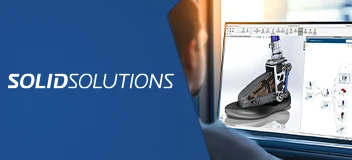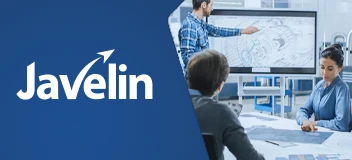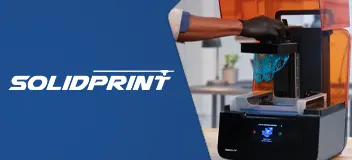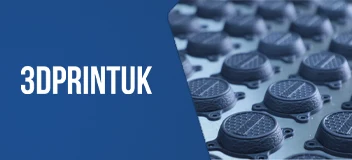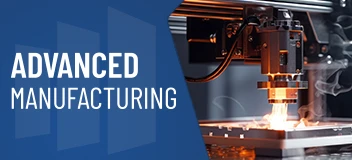SOLIDWORKS Simulation Nonlinear Training Course Overview
This class will raise your SOLIDWORKS Simulation FEA skills to the next level! It offers hands-on experience on the use of the SOLIDWORKS Simulation Nonlinear module.
The course provides an overview on a wide range of nonlinear structural/mechanical analysis topics. You will learn how to deal with models that exhibit large displacements and/or yielding; discuss and practice the use of many material models available in SOLIDWORKS Simulation and, most importantly, how to drive a nonlinear analysis to successful completion.
Examples
Take a look at some of the studies you will be conducting in the SOLIDWORKS Simulation Nonlinear course
SOLIDWORKS Simulation Nonlinear Course Requirements & Benefits
Understand the course requirements and the skills you will acquire after completing the SOLIDWORKS course
"The instructor has a phenomenal knowledge of the material. It was a pleasure taking the course, "
— Wayne Taylor, Hamilton Kent.
"I can apply what I learned from this course right away, on a few simulation projects I have at work."
— Martin Leung, IPEX Technologies Inc.
"The instructor was very enthusiastic, and I can't wait to get back and explore the different applications for the SOLIDWORKS Simulation Nonlinear module."
— Aiden Aird, Developing Innovations.
SOLIDWORKS Simulation Nonlinear Lessons
The following lessons are included in the course
Introduction
- About This Course
- Prerequisites
- Course Design Philosophy
- Course Length
- Using this Book
- Laboratory Exercises
- About the Training Files
- User Interface Appearance
- Conventions Used in this Book
- Use of Colour
- What is SOLIDWORKS Simulation?
- Premium: Nonlinear
- More SOLIDWORKS Training Resources
- Local User Groups
Introduction to Nonlinear Structural Analysis
- Introduction
- Types of Nonlinearities
- Geometric Nonlinearities
- Material Nonlinearities
- Solving Nonlinear Problems
Geometric Nonlinear Analysis
- Introduction
- Small Displacement Analysis
- Large Displacement Analysis
- Finite Strain Analysis
- Large Deflection Analysis
- References
Material Models and Constitutive Relations
- Introduction
- Elastic Models
- Linear Elastic Model
- Nonlinear Elastic Model
- Hyper-elastic Models
- Elasto-Plastic Models
- Basic Characteristics
- Essential Concepts of Elasto-plasticity
- Elasto-Plastic Models
- Super Elastic Nitinol Model
- Flow Rule
- Linear Visco-Elastic Model
- Creep Model
- References
Numerical Procedures for Nonlinear FEA
- Overview
- Incremental Control Techniques
- Force Control Method
- Displacement Control Method
- Arc-length Control Method
- Iterative Methods
- Newton-Raphson (NR)
- Modified Newton-Raphson (MNR)
- Termination Criteria
- References
Contact Analysis Introduction
- Global Contact / Gap Conditions
- Local Contact / Gap Conditions
- Troubleshooting for Gap / Contact Problems
- References
Lesson 1: Large Displacement Analysis
- Objective
- Case Study: Hose Clamp
- Problem Statement
- Stages in the Process
- Linear Static Analysis
- Auxiliary Boundary Conditions
- Solvers
- Geometrically Linear Analysis: Limitations
- Nonlinear Static Study
- Curves (Load Functions)
- Fixed Incrementation
- Large Displacement Option: Nonlinear Analysis
- Analysis Failure: Large Load Step
- Fixed Time Incrementation Disadvantages
- Autostepping Incrementation
- Autostepping Parameters and Options
- Advanced Options: Step/Tolerance Options
- Linear Static Study (Large Displacement)
- Summary
- Questions
Lesson 2: Incremental Control Techniques
- Objective
- Incremental Control Techniques
- Force Control
- Displacement Control
- Case Study: Trampoline
- Project Description
- Stages in the Process
- Linear Analysis
- Membrane Structures
- Nonlinear Analysis - Force Control
- Initial Instability of Thin Flat Membranes
- Restart Function
- Analysis Progress Dialog Box
- Analytical Results for Membranes
- Nonlinear Analysis - Displacement Control
- Displacement Control Method: Displacement Restraints
- Single Degree of Freedom Control Limitation
- Loading Mode in Displacement Control Method
- Summary
- Questions
Lesson 3: Nonlinear Static Buckling Analysis
- Objective
- Case Study: Cylindrical Shell
- Problem Statement
- Stages in the Process
- Linear Buckling
- Linear Buckling: Assumptions and Limitations
- Linear Static Study
- Nonlinear Symmetrical Buckling
- Arc Length: Parameters
- Discussion
- Symmetrical vs Asymmetrical Equilibrium, Bifurcation Point
- Nonlinear Asymmetrical Buckling
- Summary
- Questions
- Exercise 1: Nonlinear Analysis of a Shelf
- Problem Statement
- Linear Buckling Analysis
- Nonlinear Buckling Analysis
- Discussion
- Summary
- Exercise 2: Nonlinear Analysis of Remote Control Button
- Problem Statement
- Summary
Lesson 4: Plastic Deformation
- Objective
- Plastic Deformation
- Case Study: Paper Clip
- Problem Statement
- Stages in the Process
- Linear Elastic
- Nonlinear - von Mises
- Nonlinear - Tresca’s
- Discussion
- Stress Accuracy (Optional)
- Mesh Sectioning
- Summary
- Questions
- Exercise 3: Stress Analysis of a Beam Using Nonlinear Elastic Material
- Problem Statement
- Summary
- Exercise 4: Oil Well Pipe Connection
- Problem Description
- Materials
- Loading Conditions
- Goal
Lesson 5: Hardening Rules
- Objective
- Hardening Rules
- Case Study: Crank Arm
- Problem Statement
- Stages in the Process
- Isotropic Hardening
- Discussion
- Kinematic Hardening
- Discussion
- Summary
- Questions
Lesson 6: Analysis of Elastomers
- Objective
- Case Study: Rubber Pipe
- Problem Statement
- Stages in the Process
- Two Constant Mooney-Rivlin (1 Material Curve)
- Coefficient of Determination
- 2 Constant Mooney-Rivlin (2 Material Curves)
- 2 Constant Mooney-Rivlin (3 Material Curves)
- 6 Constant Mooney-Rivlin (3 Material Curves)
- Summary
- Questions
Lesson 7: Nonlinear Contact Analysis
- Objective
- Case Study: Rubber Tube
- Problem Statement
- Instability in Assemblies
- Stabilization
- Releasing Prescribed Displacement
- Validity and Limitations of Static Analysis
- Summary
- Questions
- Exercise 5: Gear Assembly
- Problem Description
- Materials
- Loading Conditions
- Goal
- Exercise 6: Ring
- Problem Description
- Materials
- Loading Conditions
- Goal
Lesson 8: Metal Forming
- Objective
- Bending
- Case Study: Sheet Bending
- Problem Statement
- Stages in the Process
- Plane Strain
- Large Strain Formulation Option
- Convergence Problems
- Automatic Stepping Problems
- Discussion
- Small Strain Vs Large Strain Formulations
- Summary
- Questions
- Exercise 7: Large strain contact simulation - Flanging
- Problem Description
- Materials
- Loading Conditions
- Goal
Appendix A: True and Engineering Stress and Strain
- Engineering Stress and Strain
- True Stress and Strain
- References
Training Methods
Choose the training method right for you

Group/Public Training
Receive training as a group (limited amount per class) from certified instructors using vendor approved training content and methodologies.
Training is delivered either live online or in a traditional classroom environment.
Advantages
- Cost effective training method.
- More effective than video based training, with videos learners are often not as focused on the training and skip exercises.
- Learn more through group questions and feedback.

Private Training
This style of flexible training is perfect for teams or individuals who are faced with a specific challenge and require personalized courses with on-the-job coaching.
Training is available live online, in-person classroom or onsite at your location.
Advantages
- Use our state-of-the-art mobile classroom at your facility.
- Bring your team up to a consistent level of knowledge by having them take the same training at the same time.
- Benefit from flexible scheduling options.
Upcoming Training Courses
Choose a scheduled SOLIDWORKS Simulation Nonlinear course
Are you using SOLIDWORKS to its full potential?
Enhance your skills and capabilities with a SOLIDWORKS Training Assessment from TriMech.



